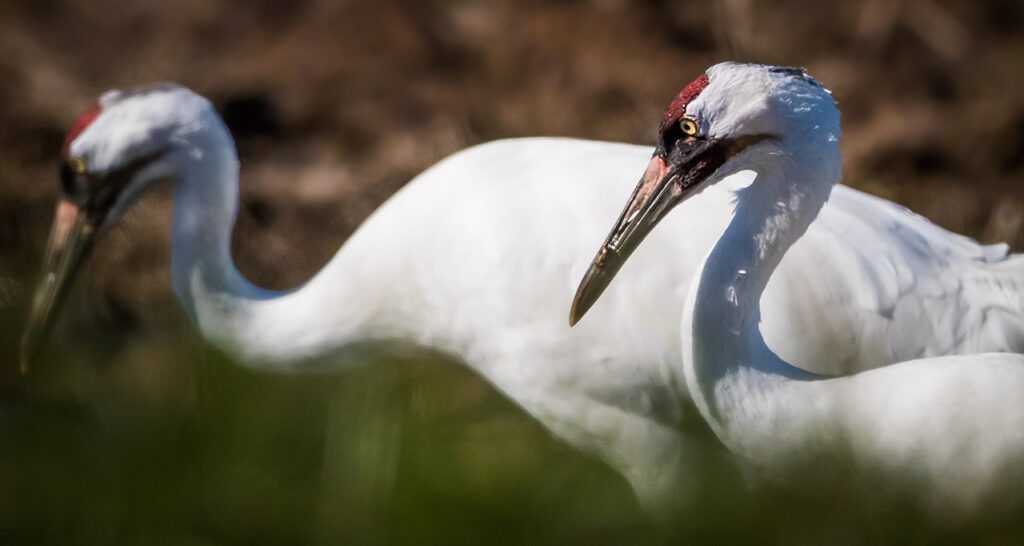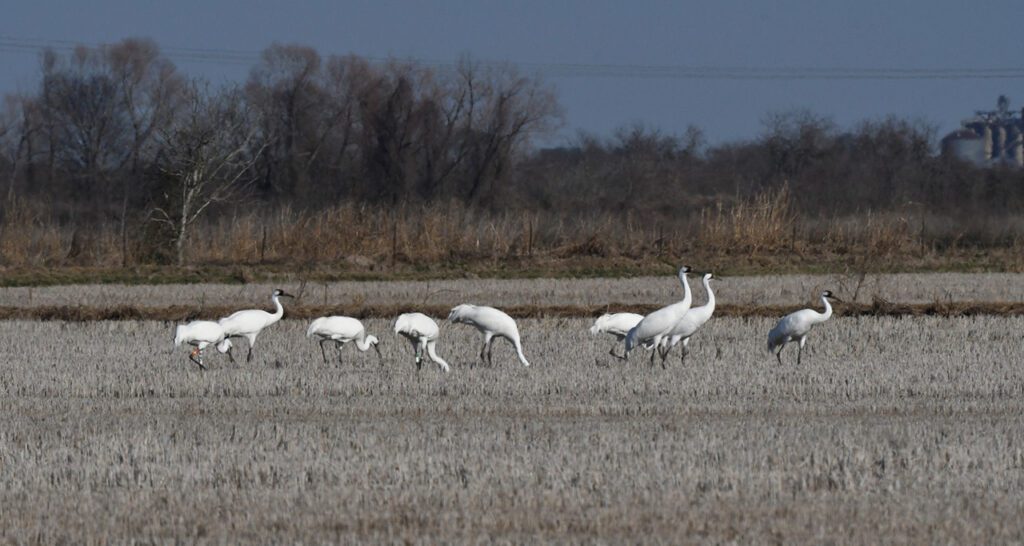Over-summering of Migratory Whooping Cranes on their Wintering Grounds
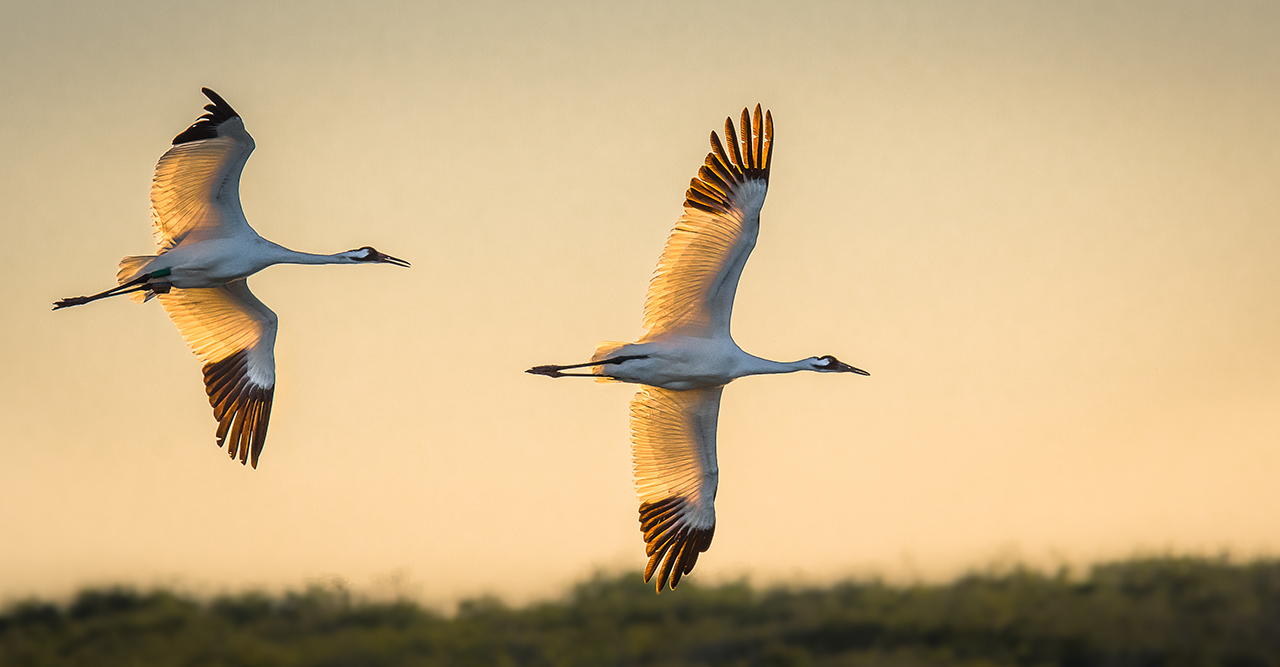
A Whooping Crane pair in flight over the Aransas National Wildlife Refuge in Texas. Photo by Ciming Mei
Migration —the seasonal movements of wildlife from one area to another—is common among many bird species. However, migration poses many risks and can be physically demanding. Interestingly, rather than completing annual migrations, some individuals may choose to remain on their traditional wintering grounds throughout the summer. This over-summering behavior has been observed since scientists began monitoring Whooping Cranes, even during periods when population numbers were significantly reduced.
Researchers from the International Crane Foundation’s Texas and Wisconsin teams partnered to compile all known information on over-summering behavior in the two current migratory populations of Whooping Cranes, the Aransas Wood Buffalo Population and the Eastern Migratory Population. This research included compiling information from published research, unpublished reports and field observations, transmitter data, trail cameras, and observations from International Crane Foundation staff, volunteers, and partners.
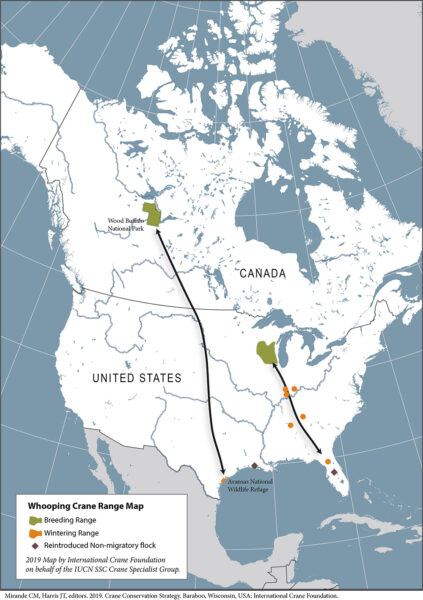
The ranges of the two migratory Whooping Crane populations are shown in green (breeding range) and orange (wintering range).
Over-summering in the Eastern Migratory Population has been well documented, given the known histories of most individuals and the high percentage of the population with active tracking devices. The researchers included information on nine birds aged one to six years that spent time on the wintering grounds during the summer season. The possible cause of over-summering on the wintering grounds was attributed to unfamiliarity with the migratory route or breeding grounds, effects of translocation, injury, or the death of a mate. Of note, many of these over-summering individuals did migrate north before returning to over-summer on the wintering grounds.
In the Aransas-Wood Buffalo Population (AWBP), historical records show that over-summering on the wintering grounds has occurred for over a century. Four instances were recorded between 1891 and 1941, during a period of rapid population decline. Since then, one to four birds have been reported over-summering on the wintering grounds in 23 different years. Some of these cases were linked to injury, illness, or the injury/illness of a mate. However, in most cases of over-summering in the AWBP, there was no clear indication of the cause of skipped migration. Additionally, over-summering in the AWBP was observed across various age classes.
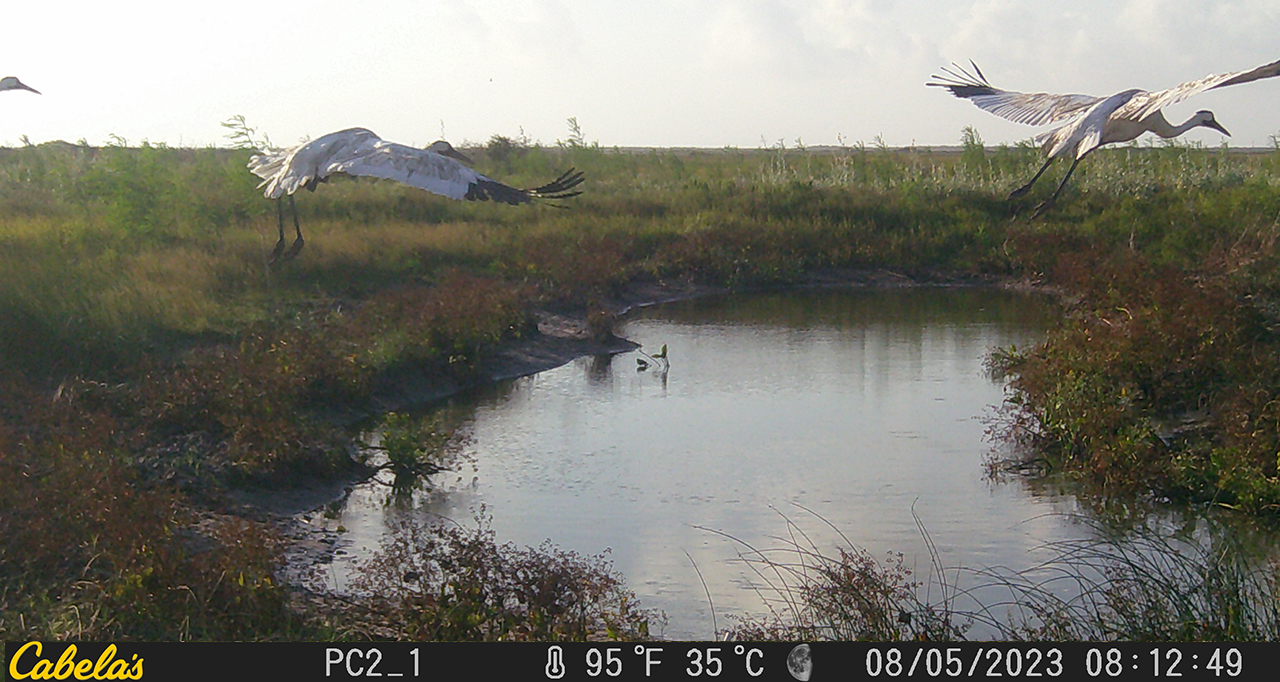
Three over-summering Whooping Cranes captured on a trail camera at a freshwater pond in Texas in August 2023.
The researchers also shared evidence of over-summering AWBP individuals undergoing a flightless molt during their summer in Texas. The process of molting flight feathers is not very well documented or understood in the AWBP, primarily due to the remoteness of the breeding grounds, where the approximately six-week flightless molt typically takes place.
In both migratory populations, the researchers documented individuals that oversummered on the wintering grounds and then migrated normally and bred successfully in later years. There is likely a trade-off to over-summering on the wintering grounds. Breeding-age birds that miss a breeding season miss out on the opportunity to raise young for a whole year; however, skipping migration may increase their survival and make them more likely to breed successfully in future years.
Over-summering on the wintering grounds is not a new occurrence for migratory Whooping Cranes. In fact, it has been happening since scientists have been monitoring the species, including in the decades when the total population numbers were quite low. The researchers highlighted that “If the population continues to grow, over-summering may become more common.” Following publication of this research, two Whooping Cranes spent the summer of 2025 in Texas, which makes it the 5th year in a row of AWBP Whooping Cranes over-summering on the wintering grounds.
References:
Macko, P. C., S. M. Schmidt, C. G. Crouch, A. N. Barajas, A. M. Ward, H. L. Thompson, M. R. Bradshaw, and E. H. Smith. 2025. Over-summering of migratory whooping cranes on their wintering grounds. Proceedings of the North American Crane Workshop 16:81-94.
Story submitted by Daizy Silva, Outreach Biologist, and Matti Bradshaw, Leiden Conservation Whooping Crane Biologist
